| Umělec 2006/2 >> News from the Corner | Просмотр всех номеров | ||||||||||||
|
|||||||||||||
News from the CornerUmělec 2006/201.02.2006 Christoph Doswald | u-sobě | en cs |
|||||||||||||
|
New Self Confidence in Swiss Art
That it is indeed possible to fully derail a recipe for success was made all too clear when, just two years ago, when the Swiss parliament heatedly debated a reduction of grant monies for the Swiss cultural foundation Pro Helvetia. An artwork had unleashed the cultural battle, that behind the scenes had already been a longstanding debate about structural reform of Pro Helvetia; it was an installation that artist Thomas Hirschhorn that was set up in the Parisian Centre Culturel Suisse called “Swiss Swiss Democracy.” It proved to be an object of parliamentary criticism that ultimately led to a (temporary) cut in the operating budget. In one of the theater pieces that were part of the installation, an actor imitating a dog symbolically urinated on a newspaper image depicting a member of the government. When art itself becomes the focal point of public debate in a society, indeed, becomes elevated to a political issue, it surely says something about its value in general—or at least about how it fits into the current, prevailing economic interests. And in this domain, especially in the past 15 years or so, something has decisively changed in Switzerland. Whereas by 1970 author Paul Nizon could justifiably lament the “Discourse in Straits” 1 while also criticizing the provincialism of Swiss production and observation, the current state of things can be regarded in this light on the international stage as well. Indeed, simple selection of the exhibition title such as “Swiss Made” is demonstrative of this new Swiss self awareness and contemporary Swiss art is a theme, a market factor and a success story. And yet what one is really encountering is a youthful self-understanding that for the most part is based upon the development and achievements of the last decade or so. It is valid to differentiate between internal and external factors that have given wing to the “Young Swiss Artists,” or the resurgence of Swiss art in general. Think globally, act locally Whenever Swiss artists were able to enjoy international success in the past, they really could attribute that success to the indifference shown to them in their own country, or possibly ascribe it to their emigration abroad. Alberto Giacometti, Ferdinand Hodler, Meret Oppenheim, Jean Tinguely, Dieter Roth, Max Bill, Daniel Spoerri, René Buri or Robert Frank (just to name a few) had turned their backs on the societally chilly narrow-mindedness of the alpine republic in an effort to seek their fortunes as “real” artists abroad. The absence of a monolithic culture, of a consensus democracy with its notorious reputation for compromise, the absence of a true urban culture and a corresponding scene with the market and discourse potential had all contributed to driving these artists to emigrate as much as the long moribund national (state) idea that simply basked in the "good-peopleness" of the democratic pioneers and proponents and inventors of the neutrality. And those artists that chose not to emigrate fled into a kind of "inwardness," one of the buzzwords of the 1970s. By 1980, the Zurich youth riots which had at least called the fundamental ideas behind this bloated Helvetitian society into question with the slogan “Züri brännt” (Zurich’s burning) and which were highlighted in the exhibition Saus und Braus2 (The Lap of Luxury, curated by Bice Curiger), finding their generational fallout, delineated quite clearly, especially for those engaged in the cultural sector, a relevant paradigm change. Indeed, the militantly formulated demand, a product of the street battles—that not only “established” but also “alternative” culture should be financially supported—came to be acknowledged by the political powers as a given. Cultural centers—thinking and physical free spaces, often administered and operated in great autonomy—were created throughout the country. These autonomous spaces (ateliers, practice rooms, exhibition spaces, concert and theater stages, etc.) are ultimately the core of that which has come to be recognized as the Swiss Art resurgence of today. And these artists’ free spaces pulled the free spaces of the galleries and exhibition spaces along with them—in fact, at the end of the 1980s about a dozen galleries3 and exhibition spaces4 were opened in and around Zurich alone that concentrated on the procurement and marketing of contemporary art. In one fell swoop it seemed as if artists no longer had to move out into the world, for the world was coming to Switzerland. The success of the state-sponsored alternative culture was so widespread that critics coming from the very same camp came to suspect a kind of controlled ‚suppress and integrate’ strategy: “The bureaucratic servitude in these rituals of money raising corresponds to a kind of warehouse mentality in which the opposing culture has been made safe for the salons and bureaucratically reasonable and accountable,” noted philosopher Hans Ulrich Reck5 in 1991 in an essay on the boycott (supported by many critical cultural figures) of the 700 year celebration of the Swiss Confederation. The Nonchalance of an open view Part and parcel of this observation is that the basic societal critiques of those days were nevertheless still considered fertile ground of a conventional, cultural avant-garde. Yet this point of view was already eroding at the start of the 1990s in deference to other criteria: professionalism, internationalism, information, directness, speed. And it was in execution of these traits that the Swiss, on the basis of their relative good standard of living and their political structures, had distinct advantages. The country is well-connected, has the necessary education and means of production, is multi-cultural and multi-lingual, has an exceptionally high work ethic, an educational system for artists in the schools of applied arts6 that is exceptionally equipped and that is focused upon an interdisciplinary idea and was therefore optimally prepared at the time for the subsequent nascent globalization of art, its marketing and the operation of its exhibitions. Parallel to this, Switzerland was experiencing fundamental structural change at the time, turning away from industrial culture and education system of post-industrial society. This development not only freed up new spaces, but also led to a public discussion about the future uses of these spaces. And because art was coming to play a larger role on the one hand as a gentrification measure in the meantime and on the other an argument in local marketing, at the beginning of the 1990s the factories, depots and warehouses were gladly made available for alternative uses. In the Zurich Löwenbräu district, this development benefited from a well-known and much produced symbol and thus instant societal recognition. In the space-grabbing video projections and installation from artists such as Urs Fischer, Christoph Büchel, Pipilotti Rist, Daniele Buetti, Mickry3, Ugo Rondinone or Olaf Breuning, this new space related working freedom found a corresponding expression in the work. A further indicator of this broadening societal acceptance is the attention given to the trend by the media that art is currently enjoying in Switzerland. If the genre seemed to be sleepily lurking about the fringes of the Swiss media throughout the 1980s, nowadays not a single day passes without some sort of report on art—though perhaps less and less on a cultural level of discussion, but increasing on a society and economic level. It may well be that art has already been completely consumed as a part of the entertainment industry and is therefore being critiqued in the same manner as well. The market and the visibility of the Swiss art scene has nevertheless grown so broadly in the last 15 years that today a wide audience is interested in the players active in this milieu who are also very interested in the cash flow and interconnected network surrounding it. Accordingly, real discussions about art itself are no longer occurring in mass media outlets but rather in special interest media—such as Parkett, a magazine that was founded 20 years ago and from the very beginning was geared to an international audience, with regular, bilingual editions.7 Parkett is an important cornerstone in the Swiss procurement and agents mosaic who are always on the look out or seeking fellow peers. Due to the small geographic dimensions of the country, galleries, state sponsored endowments (Pro Helvetia, for example), private endowments, collectors and exhibitors are in constant contact and engaged in constructive competition with one another. While the aforementioned Swiss "narrowness" was viewed as a handicap at the beginning of the 1980s, today it can only be viewed and understood as an advantage of location. The erstwhile inwardness has given way to the “nonchalance”8 of “the open view on the Mediterranean”9—even if in the meantime the likes of “Swiss Swiss Democracy” and creator Thomas Hirschhorn have shown their teeth in anger. Only the “Swissness” within the art itself, following years of research by generations of art historians, remains, thankfully, a further elusive mystery. 1) Paul Nizon, "Diskurs in der Enge," Kandelaber Verlag, Bern 1970; Suhrkamp, Frankfurt/Main 1990. 2) Bice Curiger, Saus und Braus Stadtkunst, Städtische Galerie zum Strauhof, Zürich 1980. The exhibition presented about 20 different positions, including Urs Lüthi, Fischli/Weiss with their "wurst series," Dieter "Yello“ Meier, Martin Disler und Klaudia Schifferle. 3) Bob van Orsouw, Marc Jancou, Peter Kilchmann, Mark Müller, Brandstetter & Wyss, ArsFutura,, Hauser & Wirth, Mai 36, Walcheturm, Turske & Turske, etc. 4) Shedhalle, Kunthaus Oerlikon, Kunsthalle Zürich, Kunsthalle Luzern, Kunsthalle St. Gallen, Kunsthalle Wil, Fotomuseum Winterthur, Migros Museum, etc. 5) Hans Ulrich Reck, "Eine Opposition und ihr Land,“ in: Robert Fischer/Pidu P. Russek, Kunst in der Schweiz, Kiepenheuer & Witsch, p. 38. 6) Contrary to the common academy model throughout the rest of Europe that operates artists’ education in the traditional disciplines (drawing, painting, sculpture), Swiss schools for applied arts follow the Bauhaus approach, an education that seeks to integrate all artistic techniques. This school structure, however, is currently under review as to how it corresponds to European levels. 7) At the end of 2004, Parkett celebrated its 20 year anniversary with an exhibition and a catalog in the Kunsthaus Zurich. 8) Christoph Doswald, Nonchalance, Centre Pasqu’Art, Biel/Akademie der Künste, Berlin, 1997/98. 9) Bice Curiger, Freie Sicht aufs Mittelmeer, Kunsthaus Zürich/Schirn, Frankfurt, 1998.
01.02.2006
Рекомендуемые статьи
|
|||||||||||||
|
04.02.2020 10:17
Letošní 50. ročník Art Basel přilákal celkem 93 000 návštěvníků a sběratelů z 80 zemí světa. 290 prémiových galerií představilo umělecká díla od počátku 20. století až po současnost. Hlavní sektor přehlídky, tradičně v prvním patře výstavního prostoru, představil 232 předních galerií z celého světa nabízející umění nejvyšší kvality. Veletrh ukázal vzestupný trend prodeje prostřednictvím galerií jak soukromým sbírkám, tak i institucím. Kromě hlavního veletrhu stály za návštěvu i ty přidružené: Volta, Liste a Photo Basel, k tomu doprovodné programy a výstavy v místních institucích, které kvalitou daleko přesahují hranice města tj. Kunsthalle Basel, Kunstmuseum, Tinguely muzeum nebo Fondation Beyeler.
|








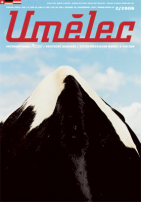












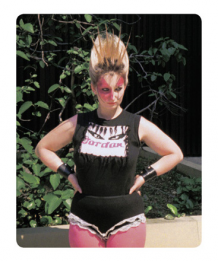




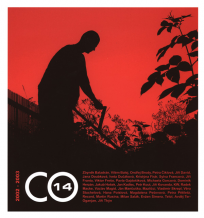
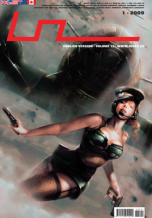

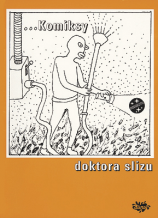


 We Are Rising National Gallery For You! Go to Kyjov by Krásná Lípa no.37.
We Are Rising National Gallery For You! Go to Kyjov by Krásná Lípa no.37.
Комментарии
Статья не была прокомментированаДобавить новый комментарий